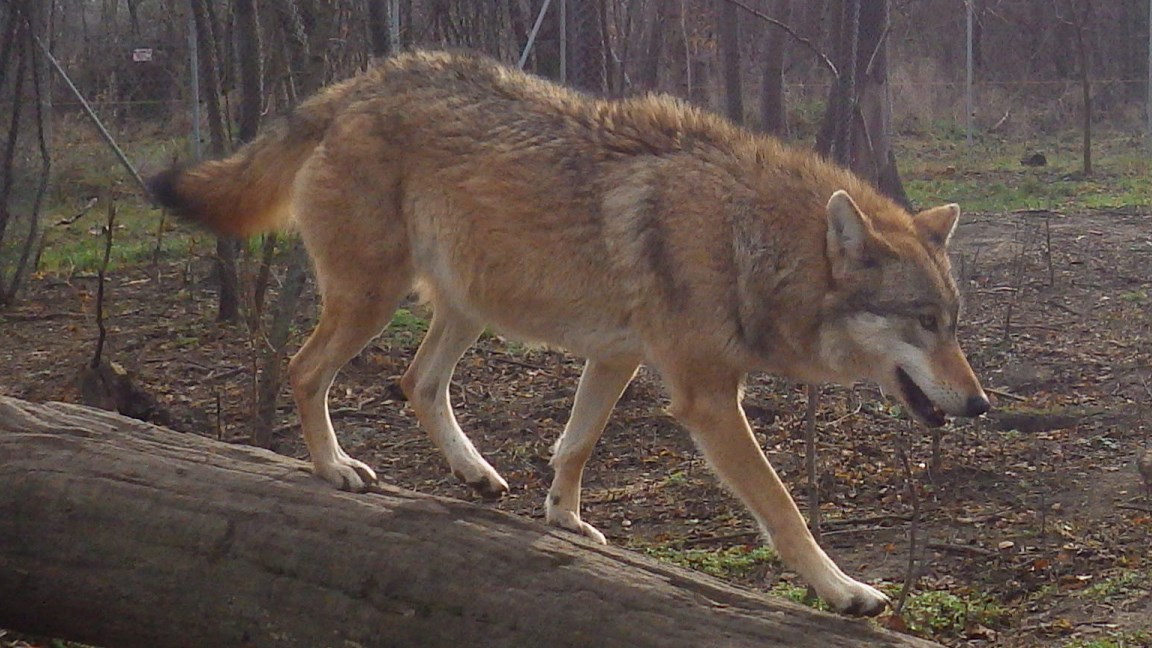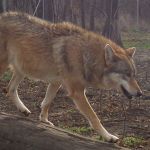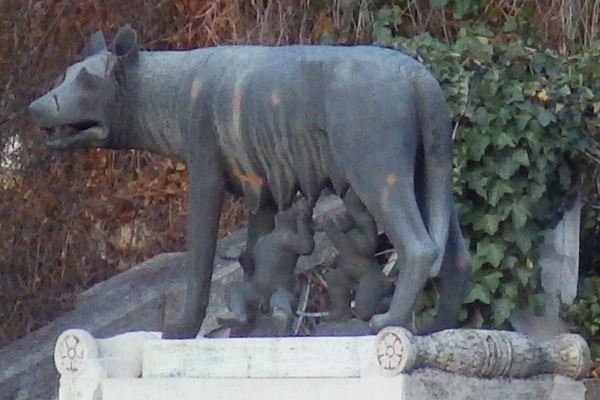Grey wolves are probably the most common predators on Earth, native to the Eurasian, African and American continents. The domesticated form of the grey wolf is the domestic dog, and wild dogs such as dingos descended from them. Since dogs tend to be present everywhere where humans are, the species pretty much lives everywhere habitable.

A European grey wolf (Canis lupus) living in a Zoo in Szeged, Hungary.
The wild animal is referred to as grey wolf, or just wolf. Wolves are commonly referenced in human culture. People feared wolves, hunted wolves, occasionally even worshipped wolves throughout history.
There are legends of wild she-wolves nursing human children — the most famous story being about Romulus and Remus, the founders of Rome.
This does not sound very plausible though.
Wolf pups suckle milk at first from their mother, later on when the pups are bigger, the adult wolves regurgitate some meat when the pups lick their mouth. Some say that this behavior of begging for food remains even in domestic dogs. Just remember that when your dog is licking your face and mouth, he is not really kissing you as such, but hoping to get something to eat.
While wolves are protected in lots of countries they are really successful as a species and aren’t in any particular danger of disappearing in the immediate future.
See also: Arctic wolf.




